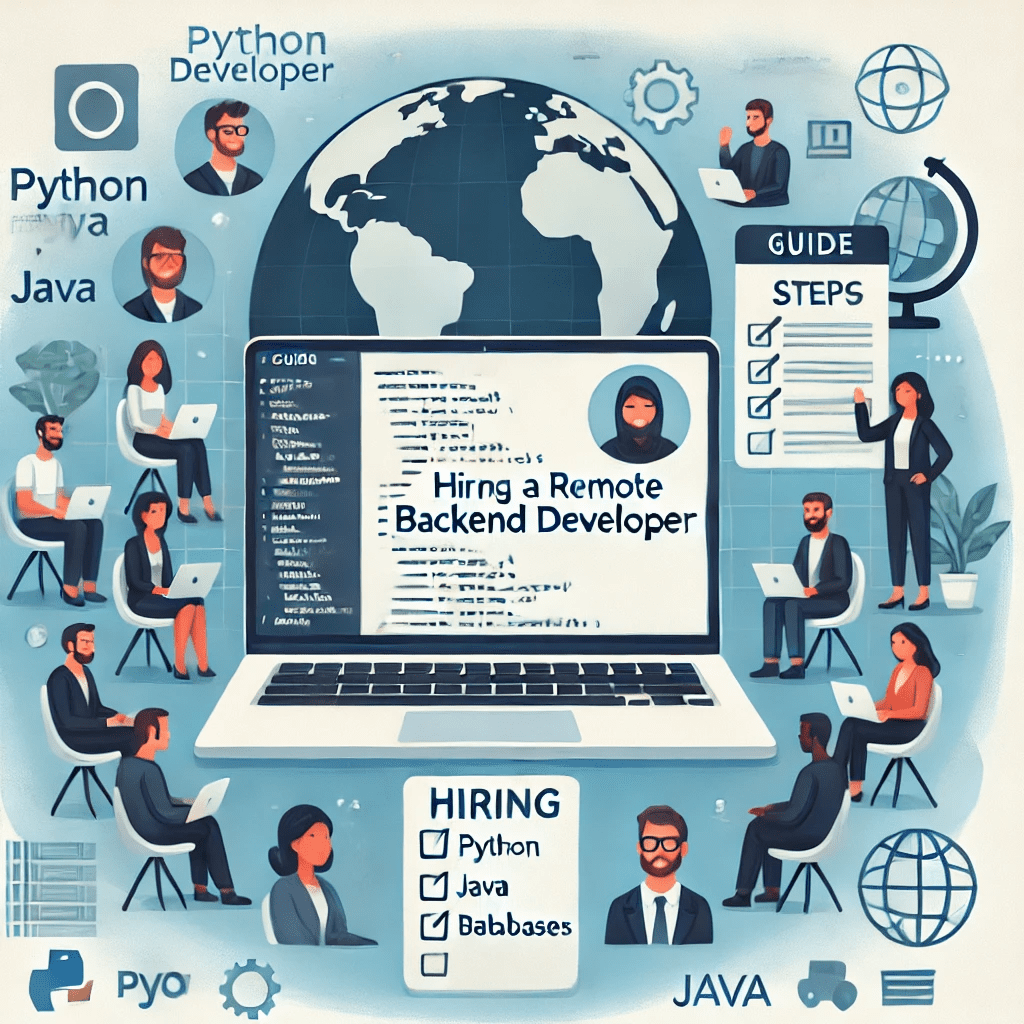In the ever-evolving tech landscape, the demand for skilled backend developers has soared, particularly as businesses increasingly turn to remote work models. Hiring a remote backend developer can be a game-changer for your project, offering access to a broader talent pool while potentially reducing costs. However, the process can be daunting without a clear strategy. This guide will provide you with actionable steps on how to hire a remote backend developer and the benefits of hiring a dedicated backend developer.
Understanding the Role of a Remote Backend Developer
Before you begin the hiring process, it’s essential to understand what a backend developer does. A remote backend developer focuses on the server side of web applications, managing databases, server logic, and APIs. They ensure that the client-side (frontend) interacts seamlessly with the server-side (backend) of an application. This role involves writing code, optimizing performance, implementing security measures, and troubleshooting issues.
The benefits of hiring a remote backend developer include:
- Flexibility: Remote developers can work from anywhere, allowing for greater flexibility in work hours.
- Diverse Talent Pool: You can access a global market, which increases your chances of finding the right fit for your project.
- Cost Savings: Remote developers may offer competitive rates compared to local candidates, particularly in regions with lower living costs.
Step 1: Define Your Project Requirements
The first step in hiring a remote backend developer is to outline your project requirements clearly. Consider the following aspects:
- Scope of the Project: What functionalities do you need? Understanding your project’s scope will help you find a developer with the appropriate skills.
- Technologies Used: Specify which programming languages, frameworks, and tools your project requires. Common technologies for backend development include Node.js, Python, Ruby on Rails, and PHP.
- Timeline: Determine your project deadlines and how much time the developer will need to meet those deadlines.
- Budget: Establish a budget for hiring. Be realistic about what you can afford and what skills you expect for that investment.
Step 2: Create a Job Description
Once you have defined your project requirements, create a detailed job description. This document should include:
- Job Title: Clearly state that you’re looking for a remote backend developer.
- Responsibilities: Outline the key responsibilities of the role, such as developing APIs, managing databases, and optimizing server performance.
- Qualifications: List the required skills and experience, including specific programming languages and frameworks.
- Soft Skills: Highlight the importance of communication, problem-solving abilities, and teamwork, especially in a remote setting.
A well-structured job description will help attract qualified candidates and set clear expectations from the start.
Step 3: Source Candidates
With a job description in hand, it’s time to start sourcing candidates. There are several effective strategies to find a dedicated backend developer:
Job Boards and Freelance Platforms
Utilize popular job boards like LinkedIn, Indeed, or Glassdoor to post your job. You can also explore freelance platforms such as Upwork, Toptal, or Freelancer, where you can find developers looking for short-term or long-term engagements.
Social Media and Online Communities
Leverage social media platforms and online communities to find potential candidates. Join relevant groups on LinkedIn or Facebook where developers gather to share knowledge and job opportunities.
Networking
Tap into your professional network for recommendations. Colleagues or industry contacts may know of qualified candidates or can refer you to someone looking for remote work.
Step 4: Evaluate Candidates
Once you start receiving applications, it’s time to evaluate candidates. Consider the following methods:
Technical Interviews
Conduct interviews that focus on the candidates’ technical skills. Prepare questions related to their experience with relevant technologies and their approach to problem-solving.
Coding Challenges
Implement coding tests or challenges that reflect the tasks they would handle in your project. Platforms like HackerRank or Codility can help you create these tests, allowing candidates to showcase their coding abilities.
Portfolio Review
Ask candidates to provide examples of previous work or projects they have completed. Reviewing their portfolios will give you insight into their coding style and experience with similar projects.
Step 5: Assess Soft Skills
While technical skills are crucial, soft skills play a vital role in the success of a remote working relationship. Look for candidates who demonstrate:
- Strong Communication: Remote work relies heavily on clear communication. Ensure candidates can articulate their thoughts effectively.
- Adaptability: The ability to adjust to changing project requirements or work environments is essential for remote developers.
- Team Collaboration: Even when working remotely, backend developers must collaborate with frontend developers, project managers, and other stakeholders.
Step 6: Discuss Terms and Conditions
Once you have identified a suitable candidate, discuss the terms and conditions of their employment. Key areas to cover include:
- Contract Type: Clarify whether you are hiring on a freelance basis or as a full-time employee.
- Payment Structure: Discuss payment terms, including hourly rates or fixed project fees, and when payments will be made.
- Intellectual Property Rights: Ensure the contract clearly states that your company will own the rights to any work produced by the developer during the project.
Step 7: Onboarding
After finalizing your hire, focus on a smooth onboarding process. Provide the new developer with:
- Access to Tools: Ensure they have access to necessary tools and platforms for communication, project management, and code repositories.
- Clear Documentation: Share detailed documentation about your project, including coding standards, architecture, and workflows.
- Regular Check-ins: Schedule regular meetings to discuss progress, address challenges, and ensure they feel supported in their new role.
Conclusion
Hiring a remote backend developer requires careful planning and consideration. By following these steps, you can successfully hire a dedicated backend developer who meets your project’s needs. Understanding the role, defining your requirements, sourcing candidates, and assessing both technical and soft skills will set you up for success. With the right remote backend developer on your team, you can build robust applications that stand the test of time.

